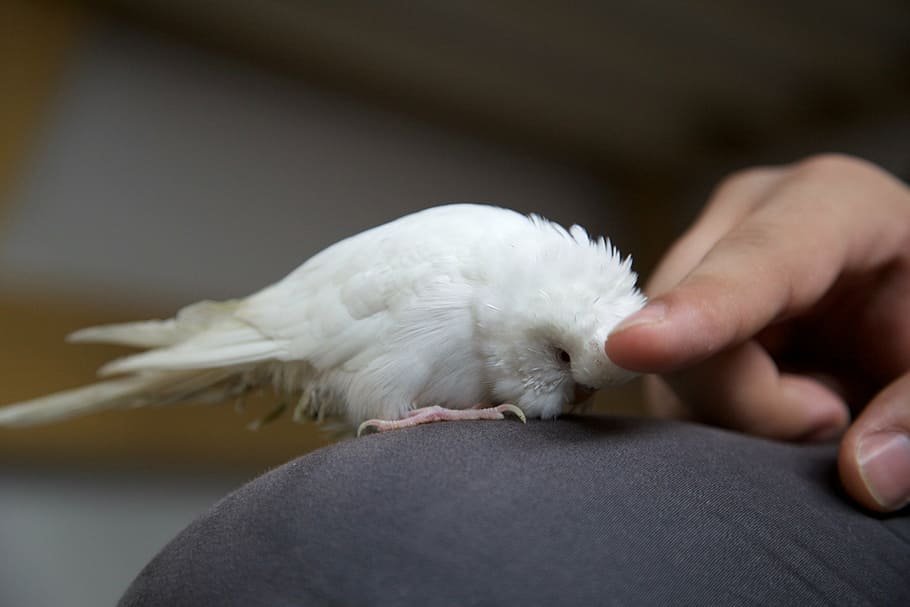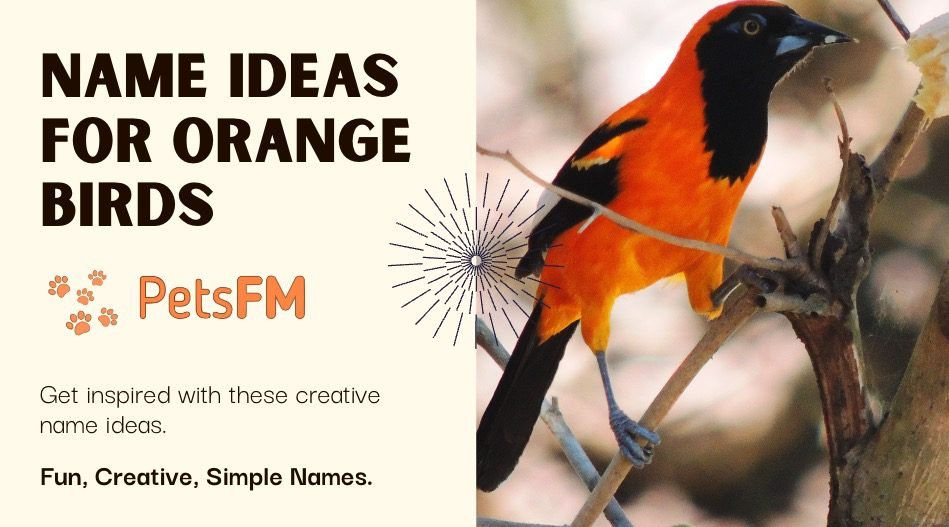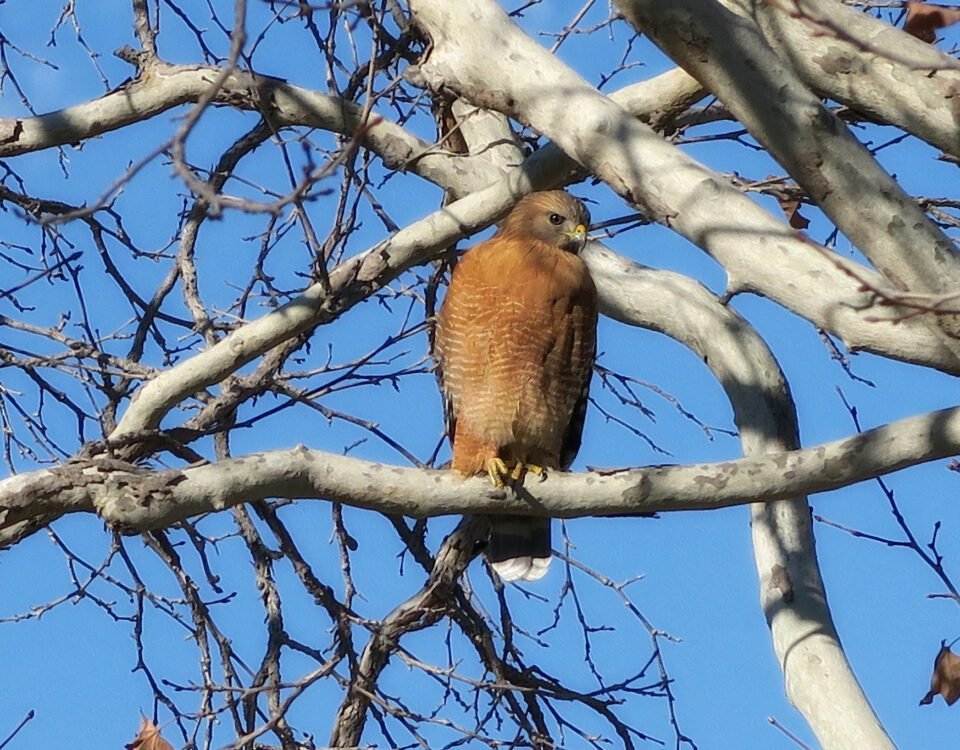


How Fast Do Baby Birds Grow? Timeline Explained
October 21, 2023


Why Do Birds Sleep With Their Heads Backward? 5 Reasons Why
October 22, 2023Can you picture a hatchling surviving without its mother? When birds emerge from their eggs, they’re often featherless and too weak to eat or drink on their own. They require special care and warmth to thrive, especially in regions with harsh winters and snow, which can even be dangerous for adult birds. How can one ensure a baby bird stays warm during the winter?
Quick Answer:
You can use automatic brooders, heating pads, and heating lamps to keep a baby bird warm. Offering them warm food can also help. Wrapping the cage with cotton might provide additional warmth. However, it’s crucial to ensure that whatever measures you take don’t cause suffocation for the young bird.
Related Read: How Fast Do Baby Birds Grow? Timeline Explained
How Can You Keep A Baby Bird Warm?
Imagine young birds that lack the strength to fly or the ability to generate their own heat. Indeed, only a mother can cater to these delicate needs.
However, there are instances where the mother bird either dies or abandons her offspring. In such cases, the male bird cares for the young. But if neither parent is around, humans can intervene to nurture the nestling and ensure its survival.
Numerous factors can lead to the demise of baby birds, including malnutrition, dehydration, illness, and cold conditions. Yet, with heartfelt care, these challenges can be overcome. Here is a detailed guide to offer invaluable advice on keeping baby birds warm, especially during nighttime and colder months. Keep reading!
1: Use An Automatic Brooder
A brooder is a box specifically crafted to keep birds warm. You can adjust its temperature based on the size of the bird. This enclosure helps isolate and treat sick birds, keeping them separate from healthy ones.
If your bird is not well, brooders can help stabilize their body temperature. These structures often come with a 100-volt bulb sized appropriately for the box.


Automatic Brooder
Paired with a thermostat, you can easily set the brooder to regulate temperature automatically. In fact, some advanced brooders automatically turn on and off once they hit a certain temperature threshold.
For a group of 10-12 nestlings, opting for a smaller box is advisable. However, it’s best to use a larger brooder catering to more than one grown bird.
2: Heated Mini Blankets
Many people opt out of brooders in favor of alternative, safe methods. For example, heated blankets designed for birds serve as a suitable option. These blankets are versatile enough to cover both baby and adult birds.
However, when employing this technique, it’s vital to determine its suitability for nestlings versus fledglings. For instance, a large heated blanket might overwhelm a hatchling, risking its life due to excessive heat.


Heated Mini Blankets
Considering warmth for baby birds, a warmed towel can be the ideal choice. Electric blankets may sometimes not be suitable due to their dense fabric. Excessive heat can slow a bird’s breathing, leading to rapid fatality.
Thus, simple heated blankets often prove more effective than their electric counterparts. However, an electric blanket might be the preferable choice when aiming to insulate a wooden cage.
3: Cotton Pads
Many people often overlook the need to insulate larger cages, leaving them exposed. In such cases, cotton pads can be vital to ensure baby birds remain warm and lively.
You can wrap the cotton in fabric and place it within the cage. Once done, place the birds over the cotton pad and drape another piece over them.
However, it’s essential not to tightly wrap birds in cotton, restricting their movement. Mobility plays a vital role in a bird’s circulatory system. Additionally, it’s advisable not to use cotton with fledgling birds as they may attempt to ingest it, potentially harming their digestive system.


Cotton Pads
4: Indoor Cages
In winter, outdoor cages can have adverse effects on birds. It’s crucial to assess the location before placing the cage. Putting a cage or hutch close to doors or windows during the cold months could harm your birds.


Indoor Cages
Ideally, cages should be oriented to receive sunlight or be shielded from chilly breezes. If inside, consider covering half of the cage. For outdoor settings, it’s often best to cover it entirely.
5: Winter-Thermo Perches
Perches are essential for birds, offering them a place to stand and climb. However, thermo-perches are specially designed for fledglings to keep them warm and cozy during winter.
It’s crucial to ensure that these perches are non-toxic and safe for young birds. They can be conveniently attached to wire and wooden cages and are designed to not harm the birds’ feet.


Winter-Thermo Perches
While perches are particularly beneficial for mature birds, fledglings might not have the strength to utilize them fully. Investing in a perch is a good idea if you’re planning for the long term and intend to keep the bird as a pet. However, there might be other cost-effective choices for a baby bird.
Also, Read: Can Birds See At Night? Unique Anatomy Of Bird’s Eye
6: Warm And Healthy Foods
In colder conditions, healthy foods play a pivotal role in maintaining a bird’s warmth. Especially for injured nestlings, a nutritious diet is vital for their survival. Nuts, such as peanuts and almonds, not only provide essential nutrients but also help in keeping them warm and healthy.


7: Small Heaters Or Heating Lamps
Heaters can provide comfort to your baby bird. Both heat lamps and ceramic bulbs are suitable for indoor and outdoor cages. They are excellent choices if you’re seeking solutions that won’t harm the bird’s feet. While brooders come with built-in bulbs, you can install ceramic bulbs or heat lamps for regular cages.


Heating Lamps
Initially, some birds require a temperature of around 95 degrees. Typically, hatchlings need warmth for roughly six weeks, a crucial period in their early lives.
Things You Should Avoid To Keep The Baby Bird Alive
While there are specific measures you should take, there are also precautions you should heed for the well-being of baby birds. Here are some guidelines to consider:
1: Avoid Using Water Bowls
Many bird enthusiasts place a bowl of cold water in cages during summer and warm water in winter, believing it comforts species like parrots and finches.


Water Bowls
But did you ever consider the risks of water bowls near nestlings or ailing birds? Unfortunately, such practices can be fatal, especially for injured birds.
For instance, cold water during cold seasons can result in throat issues for fledglings and further reduce the cage’s temperature. Extremely hot water can harm birds. Constantly monitor water temperature before offering it.
2: Refrain from Introducing Steam
Young birds require special care during their initial weeks. Exposing them to steam is detrimental. As steam condenses into water, it can negatively impact these fragile creatures. Additionally, it can raise the temperature excessively, creating an unfavorable environment for the chicks. Excessive humidity can also be harmful.
3: Avoid Too Much Touching
While human hands naturally emit warmth, frequently touching the baby birds might be unsafe. Some individuals may pick up chicks in front of their mother, which, in rare instances, could lead the mother to reject her offspring.


Building Trust with Parrots
Also, improper handling can jeopardize the bird’s health, exposing them to potential illnesses.
Furthermore, handling birds could transmit diseases to humans if they are unwell. It’s crucial to exercise caution — always wash your hands after contact. For added safety, consider wearing gloves, however, if you must handle a chick gently and carefully.
Next Read: What To Do When Your Bird Bites You? A Complete Guide
The Bottom Line
In summary, you now have learned how to keep baby birds warm. The methods mentioned, including brooders, can be invaluable for providing a safe haven in the absence of their mother. A ceramic bulb is a feasible alternative for those uncomfortable with a heated enclosure. Compact heaters, tailored to fit cages, operate automatically, offering peace of mind without constant monitoring.
Thermo-perches can be both advantageous and completely safe for birds. Especially during colder months, indoor cages with adequate covering are ideal. If you prefer an outdoor setting, opting for a cage with a protective plastic cover is best. However, certain practices should be avoided, like placing water bowls in coops and using steam.



